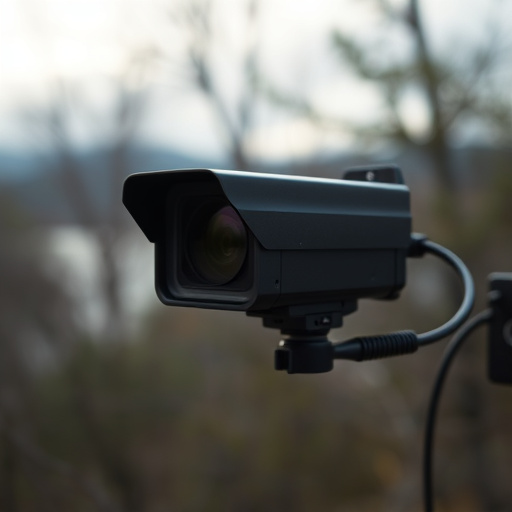Battery-powered covert nanny cameras pose a growing privacy concern due to their low power consumption and wireless capabilities. Detection requires a multi-faceted approach combining physical inspections, RF signal interception tools, and advanced software for identifying heat signatures and unusual patterns. Regular visual checks, investment in RF detectors, robust locks, surveillance systems, and window privacy films are essential preventive measures against these hidden threats.
In today’s digital age, privacy concerns have led to an increase in sophisticated surveillance methods, including battery-powered covert nanny cameras. These hidden devices operate discreetly, making their detection challenging. This comprehensive guide delves into the world of hidden camera detection, specifically focusing on radio frequency (RF) signals. We explore effective tools and techniques for identifying these covert devices, ensuring your safety, and providing insights into prevention methods against battery-powered covert nanny cameras.
- Understanding Battery-Powered Covert Nanny Cameras
- Detection Methods: Tools and Techniques
- Identifying Radio Frequency (RF) Signals
- Prevention and Safety Measures
Understanding Battery-Powered Covert Nanny Cameras
Battery-powered covert nanny cameras are a sophisticated and increasingly common method for unauthorized surveillance. These tiny, often discreet devices operate on a simple yet effective principle: using batteries to power a hidden camera that captures video or still images without the subject’s knowledge. The battery life can vary greatly, from models designed for extended periods (up to several months) to those requiring more frequent recharging. This flexibility in power source makes them versatile and challenging to detect, as they can be placed virtually anywhere with minimal risk of exposure.
Understanding how these cameras operate is crucial when it comes to detecting them. Many battery-powered covert nanny cameras are designed for low-power consumption, featuring motion sensors or infrared technology to activate recording only when necessary, further enhancing their stealthy nature. They often come equipped with wireless capabilities, enabling remote access and viewing through smartphone apps, making them even harder to trace. Detecting these devices requires a combination of physical inspections—looking for unusual electrical connections or faint LED indicators—and advanced tools designed to intercept radio frequency (RF) signals.
Detection Methods: Tools and Techniques
Detecting hidden cameras, especially battery-powered covert nanny cameras, requires a combination of advanced tools and techniques. One effective method is to use RF (radio frequency) detectors designed to pick up signals from wireless devices. These detectors can identify subtle electromagnetic signatures emitted by hidden cameras, helping users locate them in various environments.
Visual inspection and infrared technology are also crucial components of detection. Skilled professionals utilize specialized equipment like infrared thermal imaging cameras that can reveal heat signatures indicative of active cameras. Additionally, software-based solutions offer advanced image analysis capabilities, enabling the identification of peculiar patterns or anomalies that might suggest the presence of covert recording devices.
Identifying Radio Frequency (RF) Signals
Identifying Radio Frequency (RF) Signals is a critical step in detecting hidden cameras, especially those powered by batteries and designed for covert surveillance, such as battery-powered covert nanny cameras. These devices often transmit video and audio data wirelessly through RF signals, making them nearly invisible to the naked eye. To uncover these hidden transmitters, one must understand the unique characteristics of RF waves.
RF signals can be detected using specialized equipment that picks up on the electromagnetic radiation emitted by the camera’s transmitter. By scanning across various frequencies, investigators can identify the specific channel or frequency range used by the covert camera. This process requires patience and expertise, as it involves navigating through a sea of potential signals to isolate the one emanating from the hidden device.
Prevention and Safety Measures
Preventing and enhancing safety against hidden threats, like battery-powered covert nanny cameras, requires a multi-faceted approach. Individuals should be vigilant in scrutinizing potential hiding spots, especially in areas offering privacy or easy access. Regular visual inspections of walls, ceilings, door frames, and appliances can help identify unusual devices. Additionally, investing in advanced detection tools specifically designed to uncover hidden cameras is paramount. These include RF (radio frequency) detectors capable of identifying signals emitted by covert recording devices.
Safety measures extend beyond proactive searching; they also involve adopting security protocols. Keeping an eye on personal belongings, especially when in public or at work, can deter would-be intruders. Furthermore, maintaining a secure home environment through robust locks, surveillance systems, and privacy films on windows adds layers of protection. By combining awareness, inspection, and technological advancements, individuals can significantly reduce the risk of becoming victims to battery-powered covert nanny cameras.
In today’s digital era, understanding and detecting hidden threats like battery-powered covert nanny cameras is crucial for personal safety. By familiarizing ourselves with detection methods, particularly radio frequency (RF) signal identification, we can take proactive measures to safeguard our privacy. With the right tools and knowledge shared in this guide, folks can navigate and protect their spaces from these labyrinthine devices, ensuring a safer and more secure environment.
